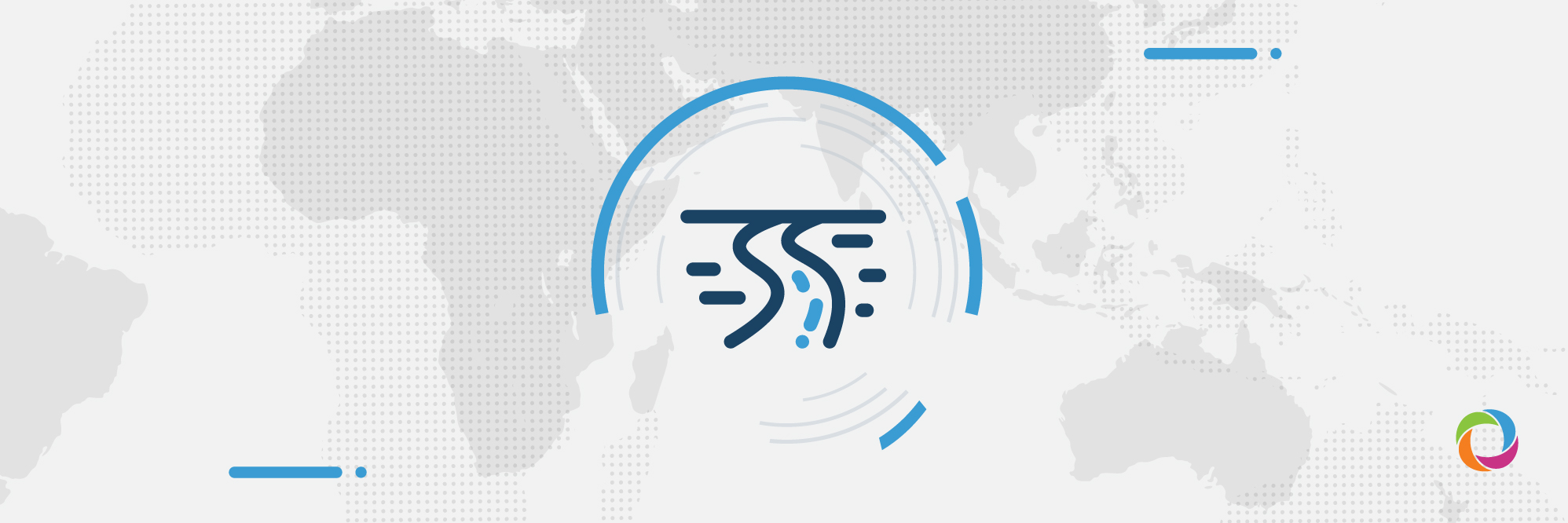Monsoon floods have greatly impacted vulnerable communities this year, affecting sustainable development across the basins of Nepal with an estimated total of 9.6 million people in Nepal, Bangladesh and India said to have been displaced or adversely affected due to these floods. The transboundary Koshi river basin that spreads across Nepal, India, and China is perceived to be the biggest threat with the potential of a glacial lake outburst from China to Nepal. Therefore, to discuss good practice and specific areas for transboundary collaboration in order to reduce disaster risks, stakeholders met at the Koshi Disaster Risk Reduction Knowledge Hub (KDKH)’s annual dialogue that took place virtually from 15th to 18th December 2020.
During the discussion, over 100 participants from various government organizations, research institutes, and development agencies considered the vision for a collaborative effort and the governance structure of the KDKH, comprising country chapters and Transboundary Working Groups (TWGs) that brought together diverse stakeholders.
Established in 2018, KDKH is a platform to develop a common understanding and to address transboundary disasters such as monsoon floods. Its secretariat is based at the International Centre for Integrated Mountain Development (ICIMOD) in Nepal. It aims to create a smooth mechanism for scientific and people-centered research to feed into inclusive policy and decision making that takes a basin approach to reducing disaster risks and building resilience.
Recognizing the hub’s role in bringing together leading authorities and agencies working on disaster risk reduction, Pema Gyamtsho, Director General of ICIMOD, said, “Its involvement with national-level agencies shows that development in the basin is a much-needed stimulus towards regional collaboration – the need for science-based decision making, looking beyond state boundaries.”
Speaking during the event, Pushpa Raj Kadel, Vice-Chairman of the National Planning Commission of Nepal, remarked, “Reducing these disaster risks in the basin is not possible without cooperation across administrative boundaries and with upstream and downstream countries. We need strong collaboration between different stakeholders to move the needle from disaster response to disaster risk reduction in the basin.”
Highlighting that a greater inter-governmental collaboration is needed to address problems which are transboundary in nature, Ayshanie Medagangoda Labe, Resident Representative of the United Nations Development Programme in Nepal, said, “Achieving the targets of the Sendai Framework for DRR, the 2030 Agenda of Sustainable Development and the Paris Agreement is only possible with the meaningful engagement of multilateral agencies, government at all levels – international to local – academia/research institutions, and local communities.”
Meanwhile, experts have observed that inhabitants of the disaster-prone transboundary basin live with haphazard information and risk knowledge. Yang Yongping, Professor at the Chinese Academy of Sciences, expressed the need for a regional mechanism to monitor glacial lakes and floods while integrating research on downstream impacts. Similarly, Rijan Kayastha, Professor at Kathmandu University, noted how standardized guidelines for the management and mitigation of Glacial Lake Outburst Floods (GLOFs) are still missing in Nepal. Vyas Ji, Vice Chairman, Bihar State Disaster Management Authority (BSDMA) of India, said, “The ongoing cross border community-based flood early warning system from Nepal and India demonstrates the benefits of transboundary collaboration. The BSDMA would support discussions with central government agencies to develop the KDKH country chapters.” Krishna S. Vatsa, Member, National Disaster Management Authority of India, remarked that, although there are bilateral government mechanisms in place, the KDKH adds great value by bringing basin-level research and the needs of communities to the forefront.
Anil Pokhrel, Chief Executive at the National Disaster Risk Reduction and Management Authority, Nepal, shared that many communities in the mid-hills of Nepal are being forced to leave their homes because of the lack of water. He added that, through the KDKH, a roadmap could be created for both transboundary collaboration and to contribute to these multidisciplinary issues. Aditya Bastola, Gender Specialist at ICIMOD, stressed the need to manage these disasters while also ensuring gender and social equity.
- Climate models predict that the Koshi basin will face overall warmer temperatures, likely to have an impact on snow and glacial reserves, leading to an increased risk of GLOFs.
- A recent report (2020) by ICIMOD and UNDP identified 47 potentially dangerous glacial lakes (PDGLs) within the Koshi, Gandaki and Karnali river basins of Nepal, the Tibet Autonomous Region of China, and India.
- Of the 47 identified PDGLs, 42 are within the Koshi basin making it the river basin with the highest risk.
- Nepal loses 333 lives and property worth over US$17.24 million every year to extreme climate events.
- Since 1977, Nepal has experienced 26 GLOFs of which 14 originated in the country itself.
During the annual event, the TWG on landslides shared recent approaches to monitor landslides and sedimentation in the basin whereas the TWG on floods emphasized the need for transboundary collaboration and integrating technology for flood risk management. Stakeholders highlighted the need to transfer knowledge to local farmers and capacity building for effective drought management and mitigation.
The annual dialogue was organized by ICIMOD, Caritas India, DP-Net, IDMR-Sichuan University, Indian Institute of Technology, Institute of Mountain Hazards and Environment, International Water Management Institute, Lutheran World Relief; Patna University, India, UNICEF Nepal, UNDP Nepal, and Yuganter.

